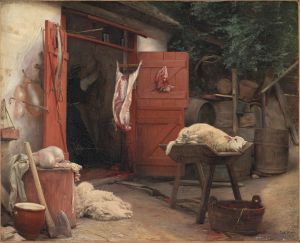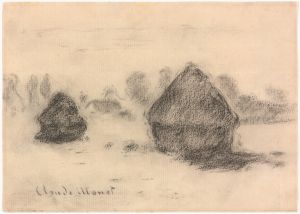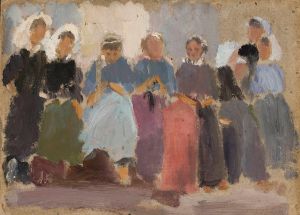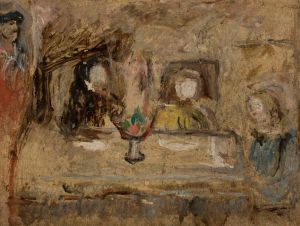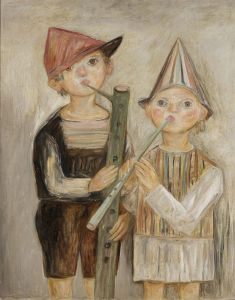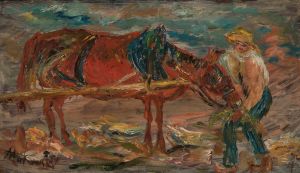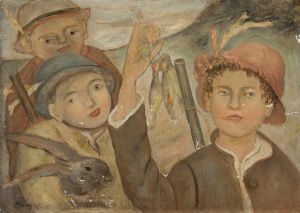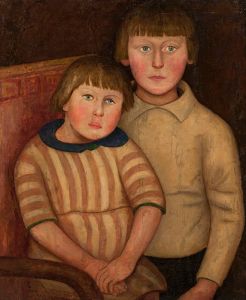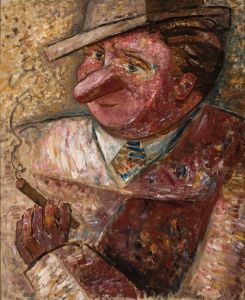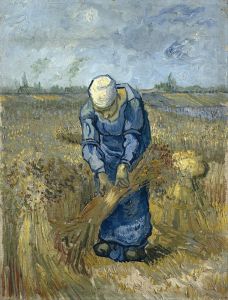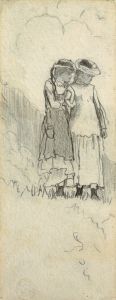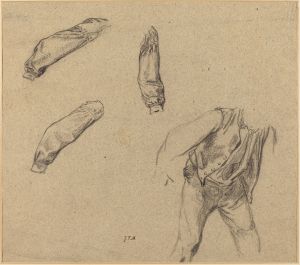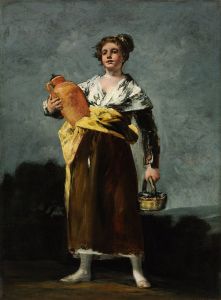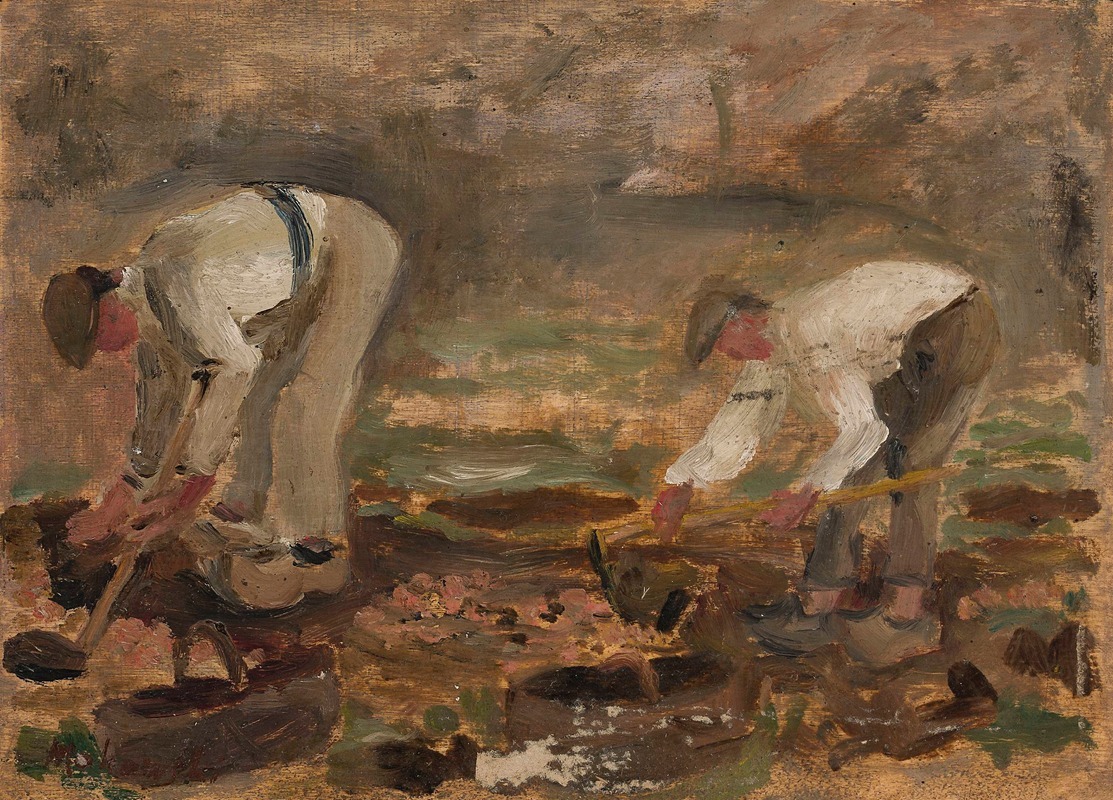
Work in a field
A hand-painted replica of Tadeusz Makowski’s masterpiece Work in a field, meticulously crafted by professional artists to capture the true essence of the original. Each piece is created with museum-quality canvas and rare mineral pigments, carefully painted by experienced artists with delicate brushstrokes and rich, layered colors to perfectly recreate the texture of the original artwork. Unlike machine-printed reproductions, this hand-painted version brings the painting to life, infused with the artist’s emotions and skill in every stroke. Whether for personal collection or home decoration, it instantly elevates the artistic atmosphere of any space.
Tadeusz Makowski was a Polish painter known for his unique style that combined elements of folk art, symbolism, and modernism. Born on January 29, 1882, in Oświęcim, Poland, Makowski initially studied classical philology at the Jagiellonian University in Kraków before pursuing art at the Academy of Fine Arts in Kraków. His early work was influenced by the Young Poland movement, which emphasized a return to folk traditions and national identity.
Makowski moved to Paris in 1908, where he became part of the vibrant artistic community. In Paris, he was influenced by the works of artists such as Paul Cézanne and the Cubists, which led him to experiment with form and structure in his own paintings. Despite these influences, Makowski maintained a distinctive style characterized by a simplicity and naivety reminiscent of children's art and folk traditions.
"Work in a Field" is one of Makowski's paintings that exemplifies his mature style. Although specific details about the painting's creation date and current location are not widely documented, it is consistent with Makowski's thematic focus on rural life and the simplicity of everyday activities. His works often depict scenes of peasant life, children, and landscapes, rendered with a sense of innocence and nostalgia.
Makowski's paintings are noted for their use of muted colors and simplified forms, which convey a sense of calm and introspection. In "Work in a Field," these characteristics are likely present, reflecting his interest in capturing the essence of rural labor and the connection between humans and nature. The painting would typically feature figures engaged in agricultural work, set against a backdrop that emphasizes the harmony and rhythm of rural life.
Throughout his career, Makowski remained somewhat detached from the mainstream art movements of his time, choosing instead to develop a personal style that resonated with his own experiences and cultural background. His work is often associated with a sense of nostalgia for a simpler, more innocent world, which is evident in the gentle and unpretentious nature of his compositions.
Makowski's contribution to art is significant in that he successfully blended elements of Polish folk art with modernist techniques, creating a body of work that is both unique and deeply rooted in his cultural heritage. His paintings continue to be appreciated for their emotional depth and the way they capture the beauty of everyday life.
Tadeusz Makowski passed away on November 1, 1932, in Paris, leaving behind a legacy of work that continues to be celebrated for its originality and heartfelt connection to the human experience. His paintings, including "Work in a Field," remain an important part of Polish cultural history and are studied for their artistic and historical significance.





